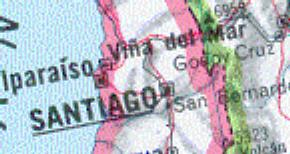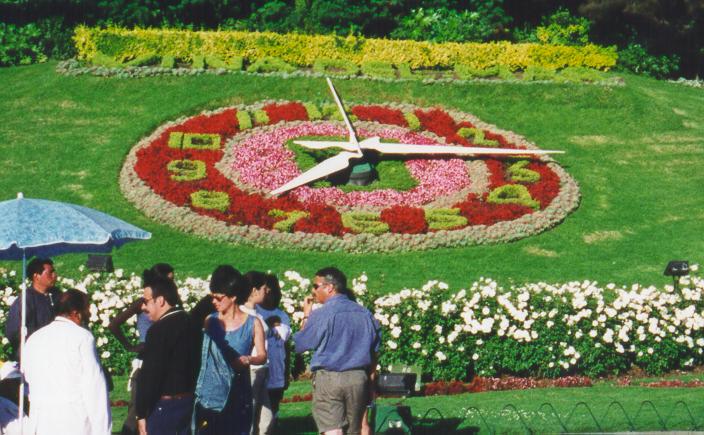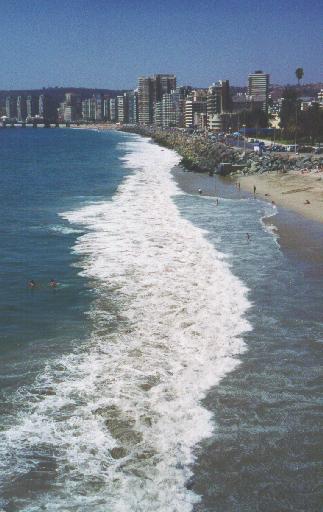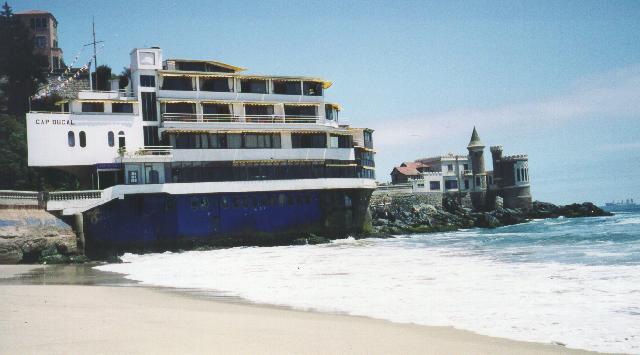Vina del Mar and Valparaiso
|
Vina del Mar
 Vina is also the most famous beach resort in Chile (which is why it is highly overbuilt with hotels and other tourist facilities). It seems to have San Diego-like weather and decent beaches. The picture below shows all the hotels that have sprung up along the beach:  However, the place I stayed at was old, cozy, and charming. It looks like a ship with its decks jutting out over the sea. The above picture was taken from my room, with the waves crashing directly underneath us. Here is the hotel as seen from the beach just outside the door:
 I highly recommend the Hotel Cap Ducal if your budget allows (just over $100 if you avoid value-added tax by paying in dollars). Even if your budget doesn't allow, treat yourself to one night here. It's a small place, so reservations are a good idea. Vina is the only place I've been in Chile which looks good for inline skating (as luck would have it, I didn't have my skates with me). There is a nice path along the beach starting on the north side of the Marga Marga, but I don't know how far the good pavement lasts.
|
ValparaisoThe commercial area is generally between the hills and the sea, while the residential area is on top. The hills are so steep that people take elevators (ascensores) to the top rather than walk up. They are not exactly elevators, because they don't go quite vertically. There are also a few ascensores in Vina and Santiago, but they are really part of the local flavor in Valpo. There are sixteen of them, all of them built between 1883 and 1916. We took Ascensor Cordillera up to the Lord Cochrane Sea Museum, which is less interesting for its exhibits than for its great view of the harbor and beyond. We also took Ascensor Turri to Cafe Turri for lunch. There we had another great view and a great meal, although we had to wait quite a while to get seated. It seemed that locals got preferential seating, so come late (after 3 pm) to avoid the lunch crowd. My guidebook said there were no really good hotels in town, which I couldn't believe for a city of over 100,000 people. But they were right: Hotel Lancaster, supposedly one of the best in town, was adequate but had a feeling of decay about it. One gets a sense that Valpo was once much nicer, but that the money has fled to Vina. To be fair to Valpo, though, I didn't plan well, and a lot of our time went to walking down long, empty streets rather than exploring some of Valpo's hidden treasures like one of Pablo Neruda's houses. Vina is made for walking around aimlessly, but Valpo you must plan for!
|